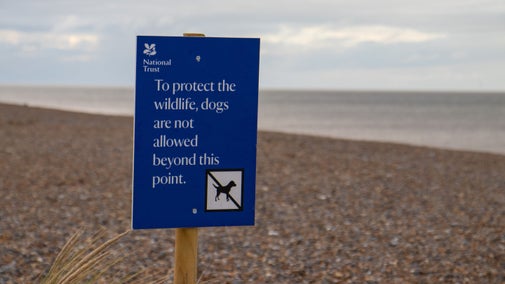Seal pupping season underway on Blakeney Point
- Published:
- 18 November 2023

Jump to
One of England’s most spectacular winter wildlife events is underway with the births of the first grey seal pups at Blakeney National Nature Reserve.
Our Rangers have high hopes for another successful pupping season for the colony, which has grown dramatically over the past 25 years to become the largest in England. The latest estimates show around 4,500 pups being born every year.
It is a far cry from the early 2000s when the colony was still becoming established. In 2001, just 25 seal pup births were recorded; it is anticipated that 180 times that number will be born between now and mid-January.

A wildlife success story
The success of the colony is believed to be due to the abundance of fish for the grey seals to feed on in the North Sea, low levels of disturbance and mortality during the pups’ key first few weeks of life, and a lack of natural predators.
National Trust rangers and volunteers continue to play a key part in supporting the seals by maintaining a regular presence on the 4-mile-long shingle spit, which helps prevent disturbance and gives them the opportunity to share information with visitors.
The National Trust works year-round to ensure Blakeney Point offers a hospitable environment for the seals. These efforts are supported by local volunteers whose contribution includes helping with a beach clean prior to pupping season; clearing up washed-up plastics and other waste cleared from a 2-mile stretch of Blakeney Point in September.
This year rangers will be able to keep an extra close watch on how the grey seals are doing, using a remote monitoring camera that will provide a continuous live video feed from the heart of the colony.
Duncan Halpin, Ranger for the National Trust on the north Norfolk coast said:
“The grey seal colony is in the early stages of becoming established for this year and we are looking forward to following the progress of the colony, and its new pups, this winter.
“Over the coming months, Blakeney Point will be carpeted in grey seals, as something in the region of 4,500 cow seals come ashore to have their pups.
“It’s a breathtaking sight and is testimony to the potential of our marine life to thrive when the right conditions, and protection from disturbance, are in place.”

Keeping track of England’s largest grey seal colony
As the numbers of grey seals at Blakeney Point have grown, the task of monitoring the size of the colony has become more complex.
Efforts to count the seals on the ground have become increasingly impractical. This is not only due to the sheer numbers of seals, but also because of the very real dangers of getting too close to these wild animals - with fully-grown bulls weighing around 230 kg.
Instead, the size of the colony will be estimated from aerial photographs, taken at different points during the pupping season, by marine biologists from the Sea Mammal Research Unit (SMRU) at the University of St Andrews.
This data is triangulated with observations on the ground, to arrive at a reliable estimate of the number of pups born.
Dr Debbie Russell, Deputy Director of the Sea Mammal Research Unit, comments:
“The UK hosts almost half of the world’s grey seals. Working with the National Trust, SMRU can estimate the number of pups born at Blakeney Point which feeds into our UK estimates.
“Critically, these numbers also feed into a project aiming to understand why grey seals are increasing so rapidly in Southeast England while harbour seals have declined by around 25% in the last five years.”

How to view seals at Blakeney Point
The best way to view the grey seal colony at Blakeney Point is by boat, with one of the seal boat tour operators that are based at Morston Quay. However, it’s recommended you book ahead this winter to ensure your place on the boats.
It is possible to view the colony by walking from Cley beach. Visitors are advised that this is a 6-mile round trip, much of it on shingle, and a protective cordon will limit how close you can get to the main seal colony. For the best experience on foot, wrap up well and bring a pair of binoculars. It is not possible to walk to the colony from other locations.
To prevent disturbance to the seals and pups by dogs, visitors with dogs are not permitted to walk up to the edge of the colony. The beginning of the restricted zone is clearly marked with signs along the width of the beach. See the articles below for more information on responsible seal viewing.
You might also be interested in
Seal watching at Blakeney Point
All you need to know about England's largest grey seal colony and how you can enjoy this remarkable wildlife spectacle on Blakeney Point.

Our work at Blakeney National Nature Reserve
Learn about the work the team at Blakeney National Nature Reserve carries out to preserve this special place for both wildlife and visitors, from counting seals to fence repairs.

Seal-spotting guidance
Take a look at our guidelines for responsible seal spotting and top tips for seal watching.

Seasonal dog walking restrictions
To protect the important wildlife on Blakeney Point, restrictions apply during ground-nesting bird season and seal pupping season.

Wildlife walks at Friary Hills and Blakeney Freshes
Friary Hills and Blakeney Freshes are home to important habitats and diverse wildlife that changes with the seasons.
